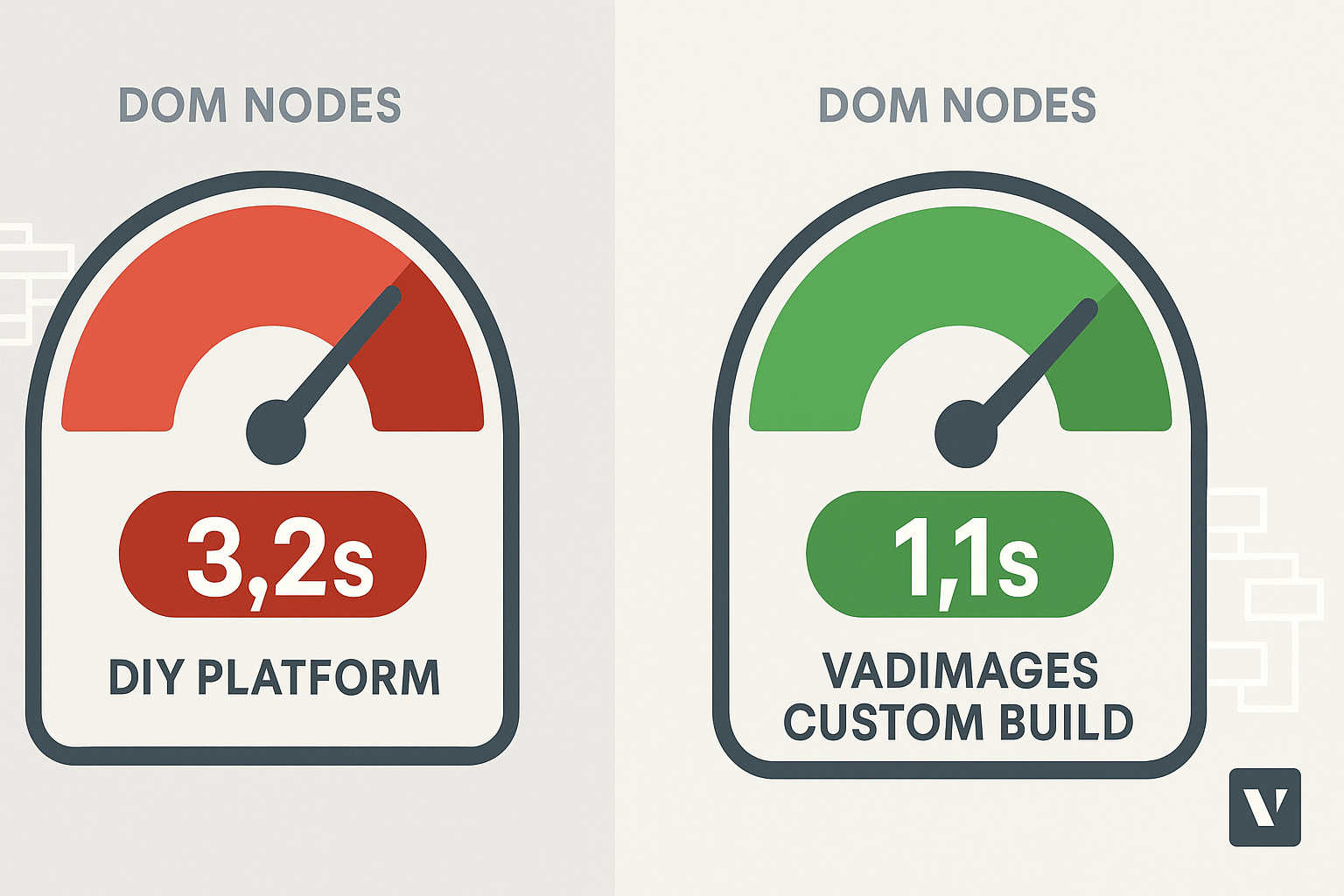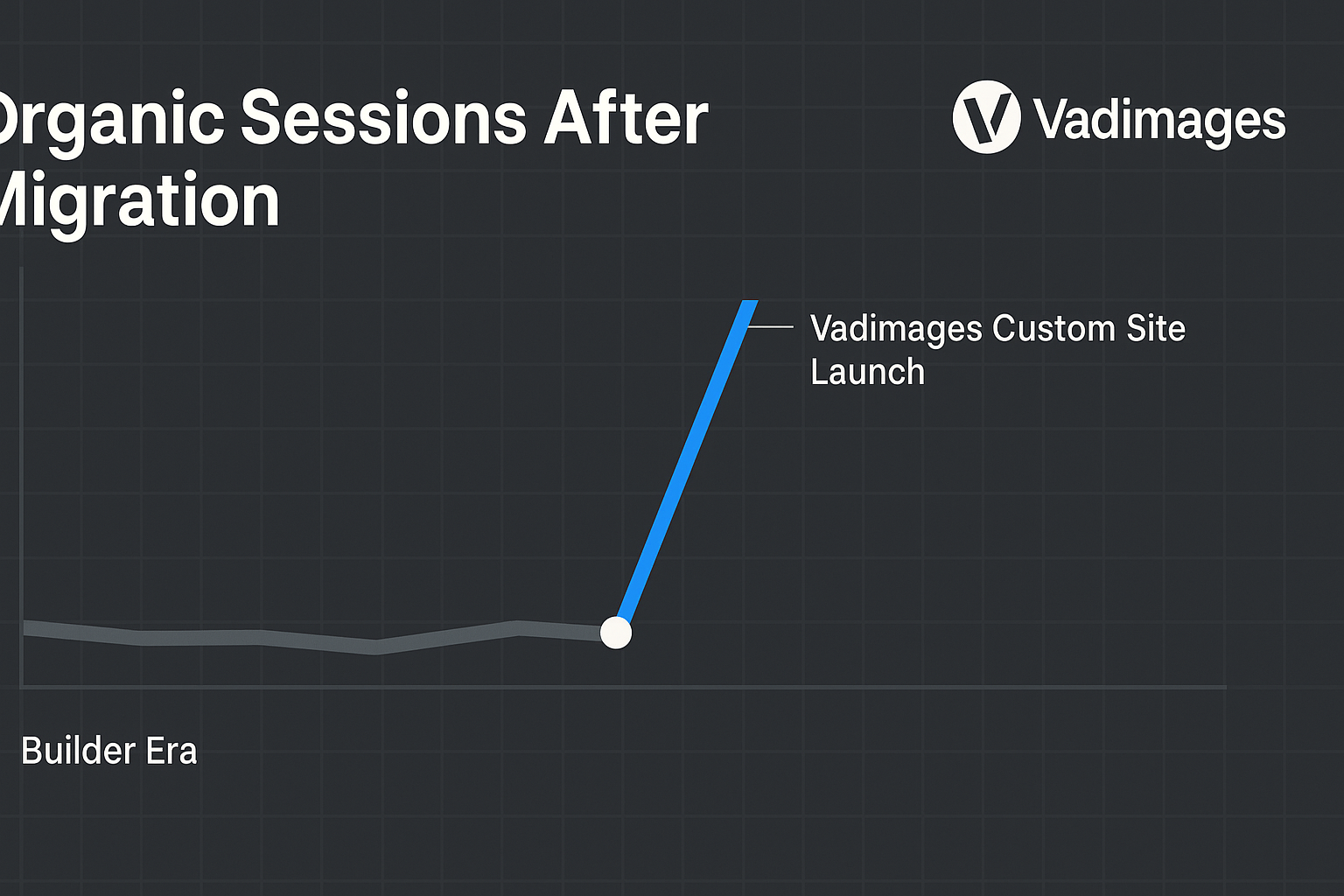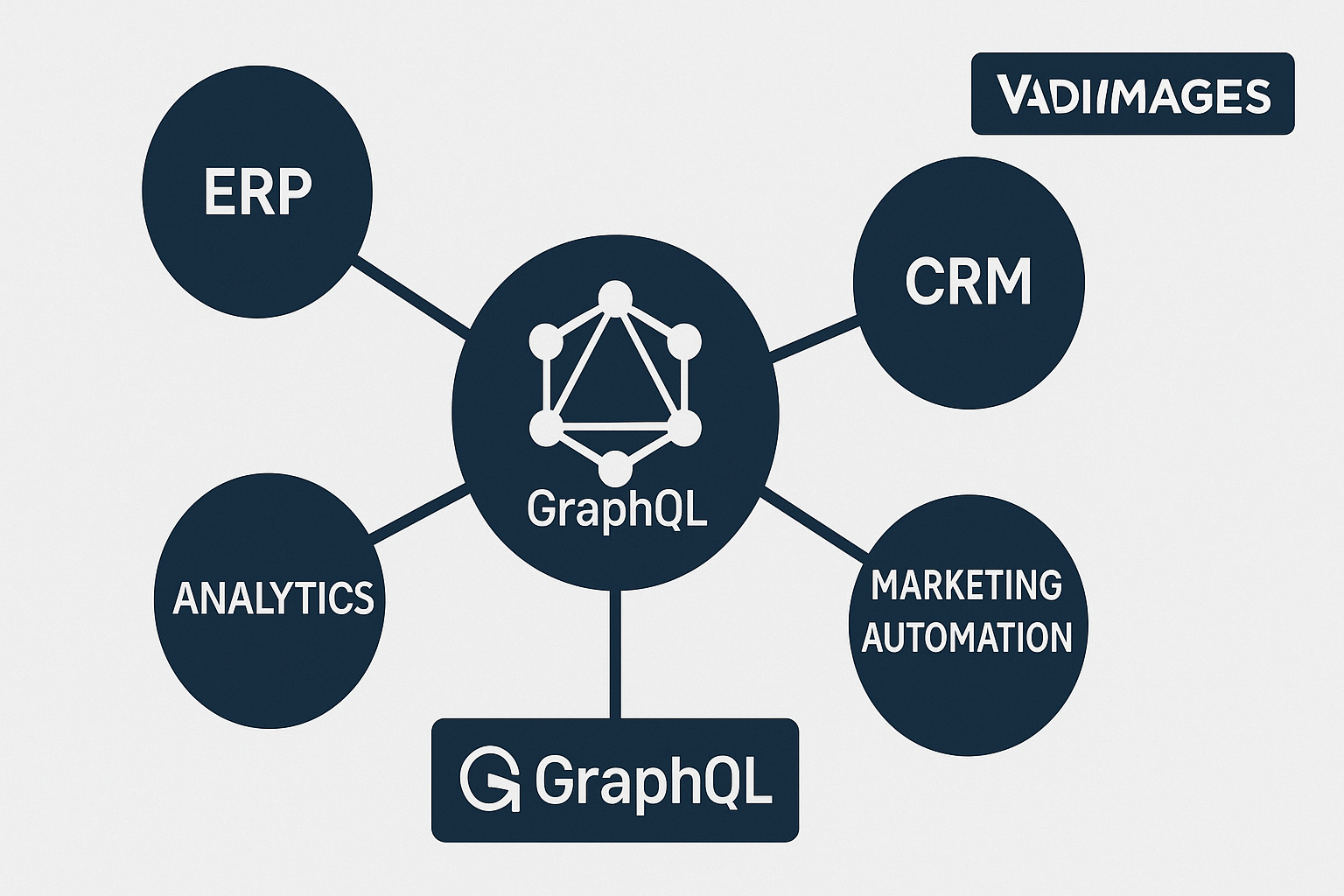Outgrowing Wix, Shopify, or WordPress? 7 Signs It’s Time for a Custom Site
When website builders first appeared, they felt like magic. Drag-and-drop blocks replaced code, and for a few dollars a month any U.S. entrepreneur could launch a store or portfolio in an afternoon. Fast-forward to 2025 and that same convenience is strangling growth for thousands of small and mid-sized businesses. Core Web Vitals updates penalize template bloat, consumer expectations for personalized speed soar by the quarter, and investors want funnels they can test rather than pages frozen in pre-baked themes. Every week our Vadimages discovery calls include owners who type “switch from Wix/Shopify/WordPress to custom site” after another sluggish check-out kills a paid-traffic campaign. Below are seven red-flag moments we see most often—subtle at first, decisive later—that signal it’s time to leave the do-it-yourself nest and invest in code tuned for your exact growth stage.
1. Your conversion rate plateaus even after fresh creative
Marketing teams push new ad angles, overhaul product photography, and rewrite headlines, yet the buy-button click-through refuses to budge. Heat-maps reveal hesitant flickers where JavaScript widgets lag, and Lighthouse tests report a swollen Document Object Model. Builder platforms load multiple abstraction layers to serve the “anyone can edit” promise, meaning a single hero banner pulls half-a-dozen resources before your message appears. Search engines now reward pages that reach “First Contentful Paint” under two seconds; builder code often needs three. When creative talent is no longer the bottleneck, architecture probably is.

2. App-store add-ons become a performance tax
A growing catalog demands real-time search filters, cross-sell carousels, and subscription billing. Each feature is available in the builder’s app marketplace, but every install injects its own style sheets, analytics calls, and injected markup. Soon your front-end requests rival those of big-box giants—without their CDN horsepower. A custom headless stack lets one well-architected bundle replace six third-party apps and slashes time-to-interactive for mobile shoppers on 4G.
3. SEO hits a ceiling no matter how many articles you publish
Google’s March 2025 Core Update prioritized authoritative structure, crawl efficiency, and semantic clarity. Builder templates trap metadata in rigid slots and render crucial links only after client-side scripts execute—scripts that crawlers increasingly skip. We migrated a Denver-based DTC apparel brand from Shopify Liquid to a Next.js-powered storefront backed by a Sanity CMS, and organic traffic surged 38 percent in ninety days without adding a single blog post. When every technical audit returns the same “platform limitation” caveat, that ceiling is real.

4. You cringe at checkout fees but fear gateway lock-in
Builder ecosystems monetize at scale via transaction fees or mandatory gateway percentages. If your annual gross merchandise volume cracks mid-six figures, those pennies multiply into lost product lines. Custom sites integrate Stripe, Braintree, or native ACH flows directly, negotiate rates, and let you deploy one-click wallets the moment they hit the U.S. market—no waiting for marketplace approval.
5. Data wants to flow, but APIs say no
Modern growth relies on unified data: orders feeding QuickBooks, churn flags pinging Klaviyo, foot traffic syncing with GA4, and AI price engines nudging margins hourly. Builder middleware often throttles API requests or exposes only superficial endpoints. Vadimages recently delivered a GraphQL gateway for a California specialty-foods retailer, consolidating ten SaaS pipes into one schema and cutting reconciliation hours from twelve per week to one. If your CFO translates numbers by CSV every Friday, code freedom turns that chore into an automated Slack digest.

6. Security and compliance audits trigger a platform escape clause
Accessibility lawsuits, PCI DSS mandates, and the expanding CCPA + CPRA rulebook impose granular controls. Shared-hosting builders update their base image, but cannot grant you server-side access to fine-tune content-security-policy headers, Subresource Integrity hashes, or privacy-center consent logic. Venture-funded B2B SaaS firms tell us they win—or lose—enterprise deals on the strength of a custom infrastructure diagram. If your RFP responses rely on “platform handles that,” competitors with bespoke answers will pass you.
7. You start planning features that no plug-in covers
True innovation rarely fits the mold. Predictive shipping timers, on-site augmented-reality demos, algorithmic discount ladders—none drop in like a theme extension. The longer roadmap meetings include phrases such as “we could if the platform finally releases X,” the clearer it becomes that technology is driving the business instead of the reverse. Custom engineering flips that dynamic.
A custom build does cost more upfront, but total cost of ownership falls when ad spend converts, staff hours shrink, and third-party overages disappear. At Vadimages we start every engagement with a fixed-price discovery sprint that maps revenue impact against development spend so you know exactly when the investment pays back.
Why choose Vadimages? Our U.S.-time-zone studios combine Rust-powered APIs for millisecond throughput with React and Tailwind front-ends that your marketing team can still edit in a friendly visual layer. We deploy across domestic availability zones for optimal latency to Chicago, Dallas, and the coasts, and every line ships with RedwoodJS testing harnesses so future iterations never regress. Schedule a complimentary migration audit and, within one week, receive a blueprint detailing workload, timeline, and projected ROI. Your customers expect a blazing-fast brand experience; let’s build the engine that delivers it.


